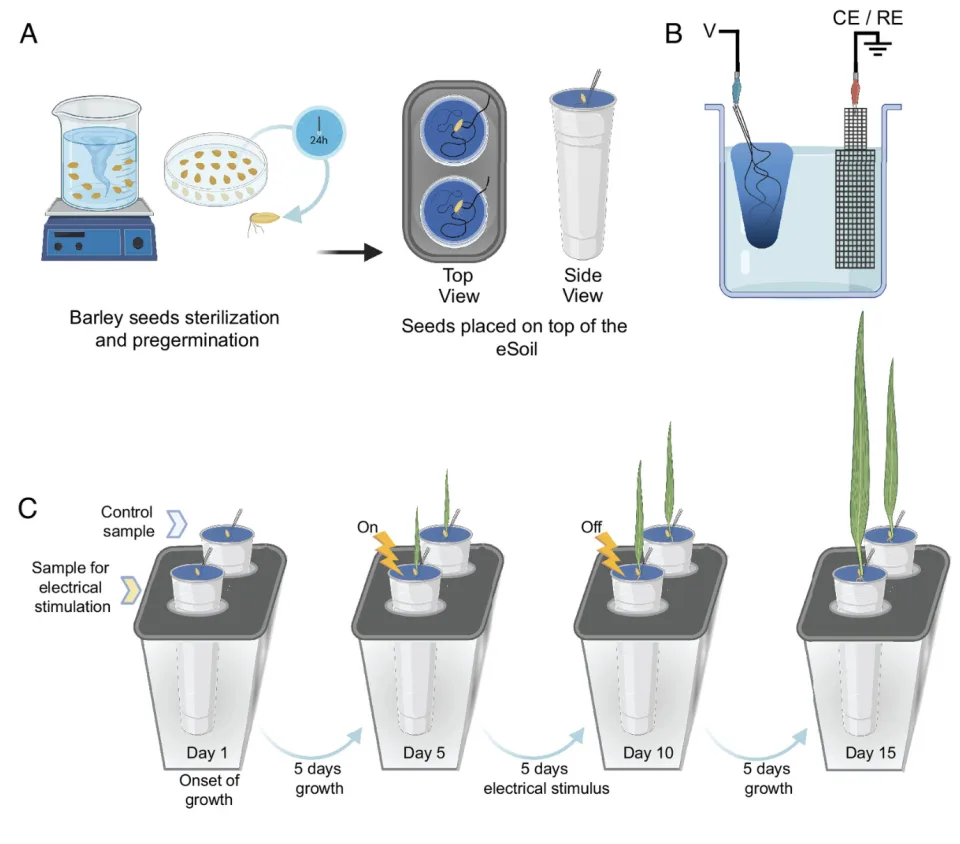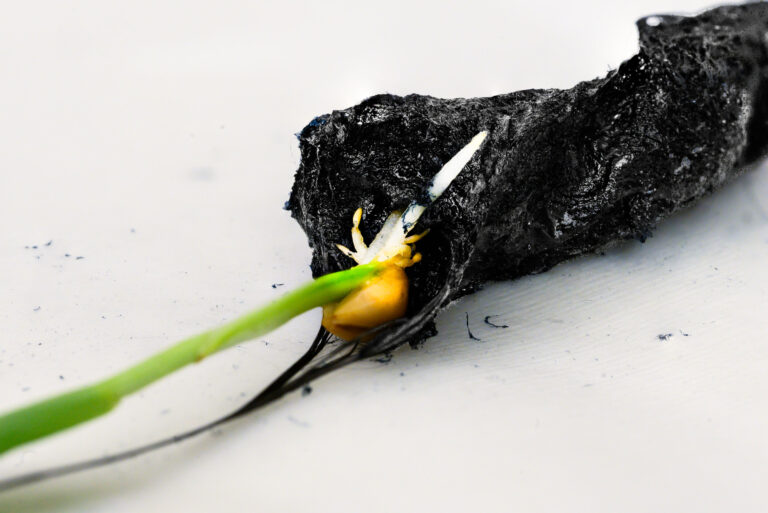“eSoil” increased barley seedling growth by 50% on average.
An ‘bioelectronic soil’ has been produced by researchers from Linkoping University in Sweden. This soil has the ability to accelerate the growth of plants in hydroponic environments, which are farms that cultivate plants without soil in conditions that are mostly composed of water and a place for roots to attach themselves. After incorporating the manufactured ‘eSoil’ into the framework where seedlings grow, researchers found that delivering electrical signals through the soil caused plants to grow by an average of fifty percent more than they would have otherwise.
The eSoil is composed of organic molecules that have been combined with a conductive polymer known as PEDOT. This polymer is discovered in a variety of applications, including OLED displays and sensors. The conductivity of the soil was essential for activating the plant roots, according to Eleni Stavrinidou, who was the supervisor of the study. Engadget reported this information. Within the scope of this particular investigation, the researchers investigated the impact of transmitting signals to barley seedlings over the course of fifteen days prior to harvesting them for the purpose of testing. According to Stavrinidou, the roots can be electrically stimulated by applying a voltage as low as 0.5V to the eSoil. This, in turn, led to a discernible increase in the biomass of the plants that were electrically stimulated in comparison to the seedlings that were not stimulated.
While the effect of the stimulation on the barley seedlings was defined as “steady,” it was also described as “transient.” In an interview with Engadget, Stavrinidou stated that the stimulation resulted in a more efficient processing of nitrogen, which is one of the primary nutrients involved in the growth of plants. According to Stavrindou, “We discovered that the stimulated plants were able to process the nutrients more effectively; however, we do not understand how the stimulation is affecting this process.” She went on to say that the rationale for the growth process will be the focus of future research.

Despite the fact that hydroponic methods are mostly utilised for the cultivation of leafy greens and certain crops such as cucumbers and tomatoes, the eSoil could provide a solution to the problem of increasing crop yields in commercial settings, particularly in locations where environmental factors have an effect on plant growth. It is highlighted in the study that this method has the potential to reduce the amount of fertilisers that are used in farming.
The United States Department of Agriculture reports that the number of farms in the United States has been progressively decreasing since 1982, which means that there is a significant opportunity for technical innovation in the agricultural sector. The number of farms in the United States reached 2 million in last year, which is a decrease from 2.2 million in 2007. The United States is losing acres of land for a variety of reasons, including climate change and a worsening economic outlook for farmers as a result of inflation, which is making farming in controlled environments more popular. Not only are farms on the decline, but the United States is also losing acres of land.
However, the introduction of eSoil in hydroponic farms could make them more energy-conscious, in addition to increasing food yields. Hydroponic farms that are more traditional demand more energy to operate, despite the fact that they use less water. According to Stavrinidou, “The eSoil consumes very little power in the microwatt range because it is so small.” Before this technique can be utilised in large-scale agriculture and other types of crops, additional research needs to be carried out to investigate the ways in which electrical stimulation might influence the complete growth cycle of a plant during its entire lifecycle, and not just in the early stages of seedling maturation. In addition, Stavrinidou mentioned that her group intends to investigate the ways in which the approach influences the development of various types of plants.

